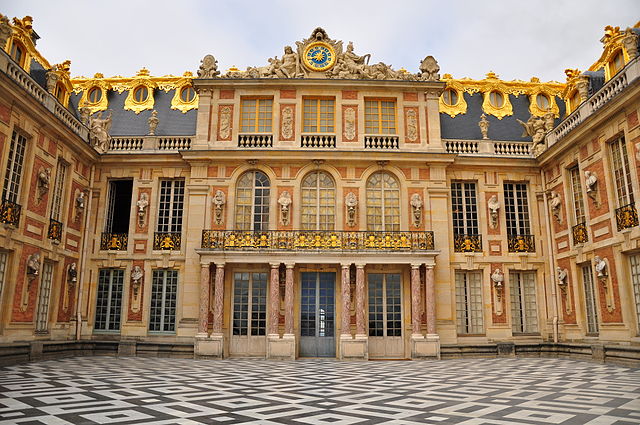A cartouche is an oval or oblong design with a slightly convex surface, typically edged with ornamental scrollwork. It is used to hold a painted or low-relief design. Since the early 16th century, the cartouche is a scrolling frame device, derived originally from Italian cartuccia. Such cartouches are characteristically stretched, pierced and scrolling.
Beaux Arts cartouche of Strada Doctor Dimitrie D. Gerota no. 9, Bucharest, Romania, c.1900, unknown architect
Roman rectangular cartouche on the frieze of the entrance of Horrea Epagathiana et Epaphroditiana, Ostia, Rome, unknown architect, 145-150 AD
Roman rectangular cartouche on a sarcophagus, 3rd century, marble, Adana Archaeology Museum, Adana, Turkey
Roman cartouche on the pedestal of the Obelisk of Theodosius, Hippodrome of Constantinople, Istanbul, Turkey, unknown architect or sculptor, 390
The Baroque or Baroquism is a Western style of architecture, music, dance, painting, sculpture, poetry, and other arts that flourished from the early 17th century until the 1750s. It followed Renaissance art and Mannerism and preceded the Rococo and Neoclassical styles. It was encouraged by the Catholic Church as a means to counter the simplicity and austerity of Protestant architecture, art, and music, though Lutheran Baroque art developed in parts of Europe as well.
Image: WLA metmuseum Venus and Adonis by Peter Paul Rubens
Image: Ecstasy of Saint Teresa September 2015 2a
Image: Cour de Marbre du Château de Versailles October 5, 2011
Pendant in the form of a siren, made of a baroque pearl (the torso) with enameled gold mounts set with rubies, probably circa 1860, in the Metropolitan Museum of Art (New York City, New York).








